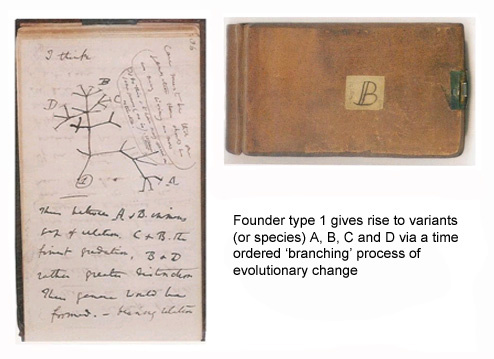Which theory was developed based on observations made on the Galápagos islands?
2 Answers
Survival of the fittest, with the species that adapt the best to differnet conditions being the fittest
Explanation:
Darwin saw a lot of different finches on the galapogos islands. These finches looked a lot alike, but he noticed that they had subtle differneces based on which island they were living on. He saw that finches living on islands with lots of nut carrying plants had larger and heavier bills. He saw other finches with long, sharp bills on anohter island. These finches ate insects and nectar.
Darwin remarked one thing: there were little to no finches with long sharp beaks on the "nutty" island. There were also very few finches with the heavy beak on the island with plants and insects. The finches that weren't native to the island could not eat enough to survive. He noticed that only the finches that were the fittest to the island survived, hence, the survival of the fittest.
 )
)
Darwin developed a firm idea of EVOLUTION of species by means of NATURAL SELECTION based on his observations in Galapagos islands (1836), to defy fixity of species promoted by contemporary creationists. He did not immediately publish as he wanted to collect comments and evidences in favour of his theory.
Darwin published his natural selection theory much later, in 1858.
(Study of Galapagos flora and fauna was also instrumental in development of idea of founder effect and genetic drift by Sewall Wright.)
Explanation:
Darwin's theory of evolution took a definite shape when he put together all his observations and thoughts regarding Galapagos. This link may help more.
- Darwin was amazed by the fact that islands of similar origin, with similar climatic conditions, separated by short stretches of sea could support so many different inhabitants, unique to each island . This was based on his studies, mainly involving varieties of tortoises and finches of different islands.
- Moreover, he realised that the plants and birds present in Galapagos are actually stemming from ancestors living in nearby South American continent.
- This observation strengthened his idea of transmutability of species; he concluded that geographic isolation leads to adaptive radiation.
- This idea of evolution from common ancestor was depicted by a famous branching diagram that he made on 36th July, 1837 in his notebook B.

So he recognised colonisation of organisms from nearest main land, their isolation and subsequent modification which led to appearance of new species, perfectly adapted in new habitat. This eventually led to formulation of a more convincing dynamicity of species concept.

